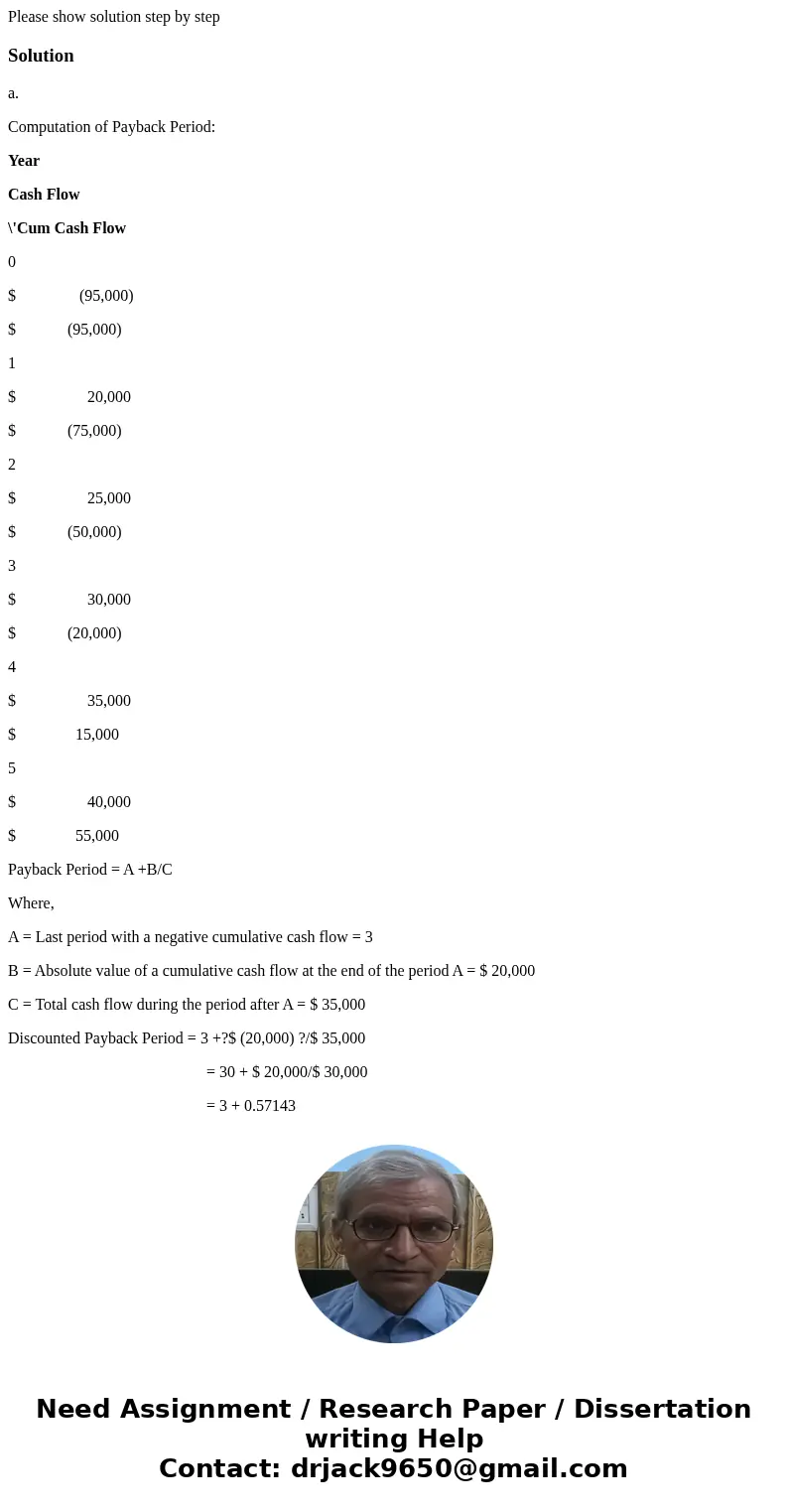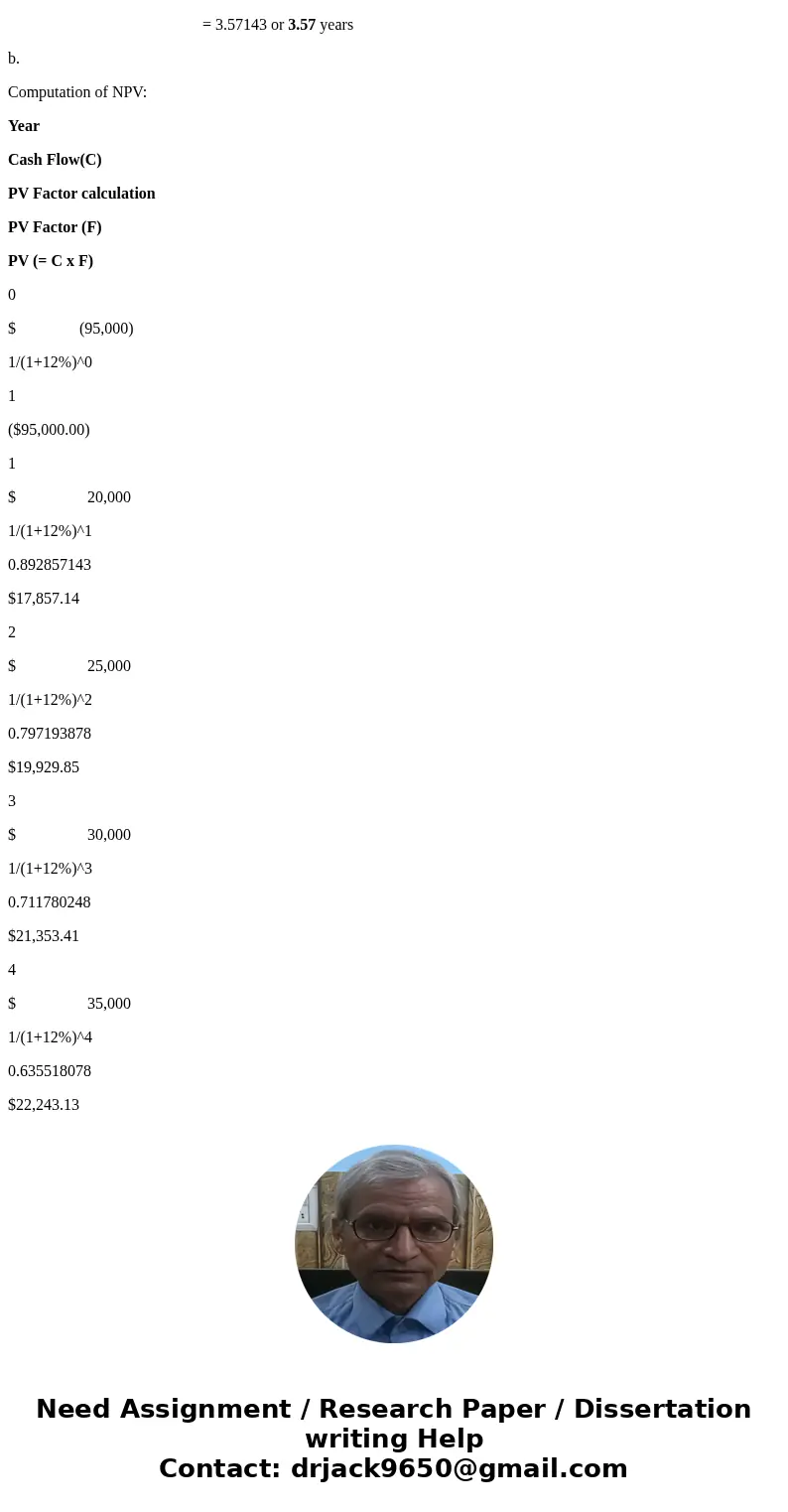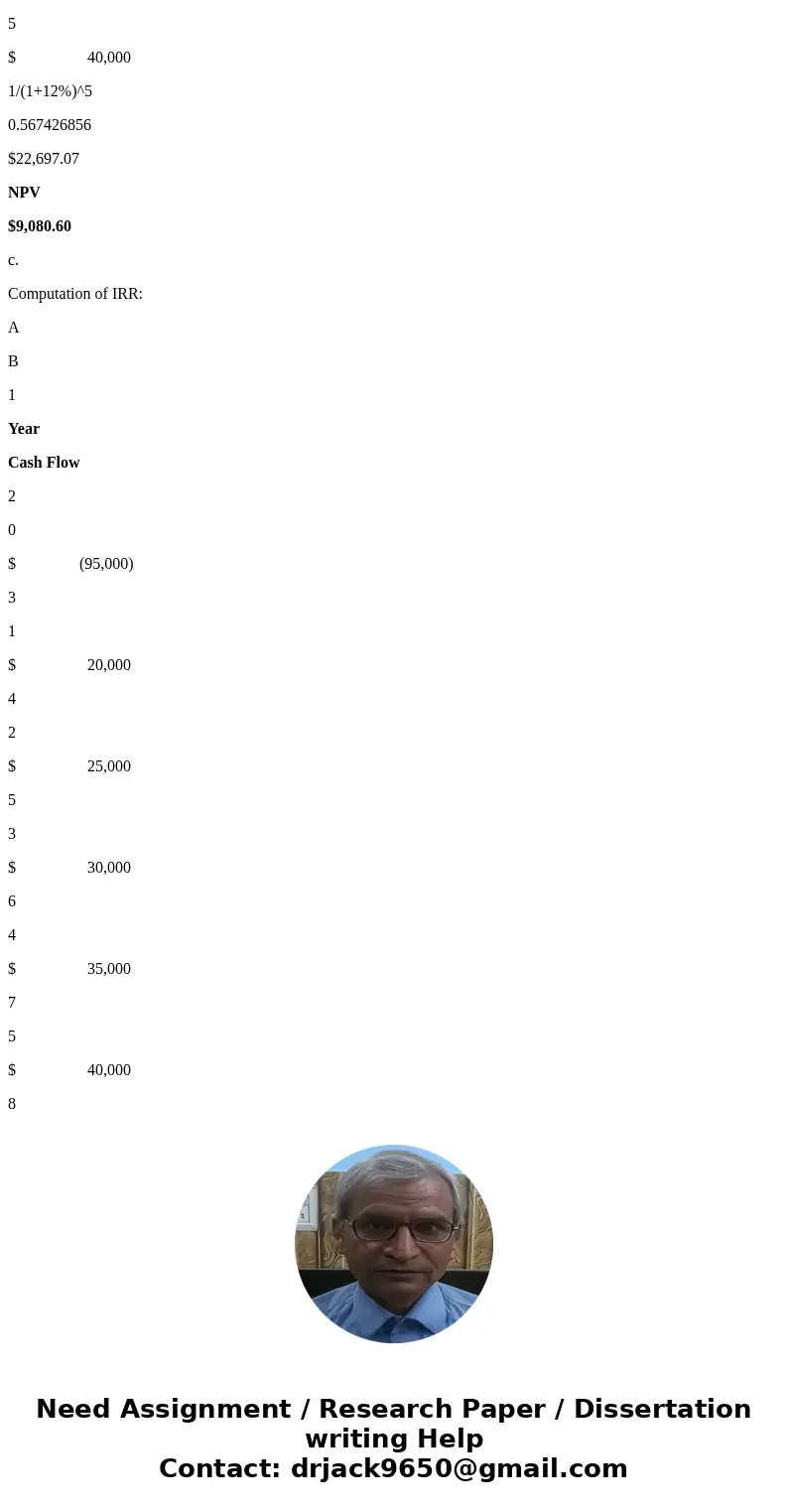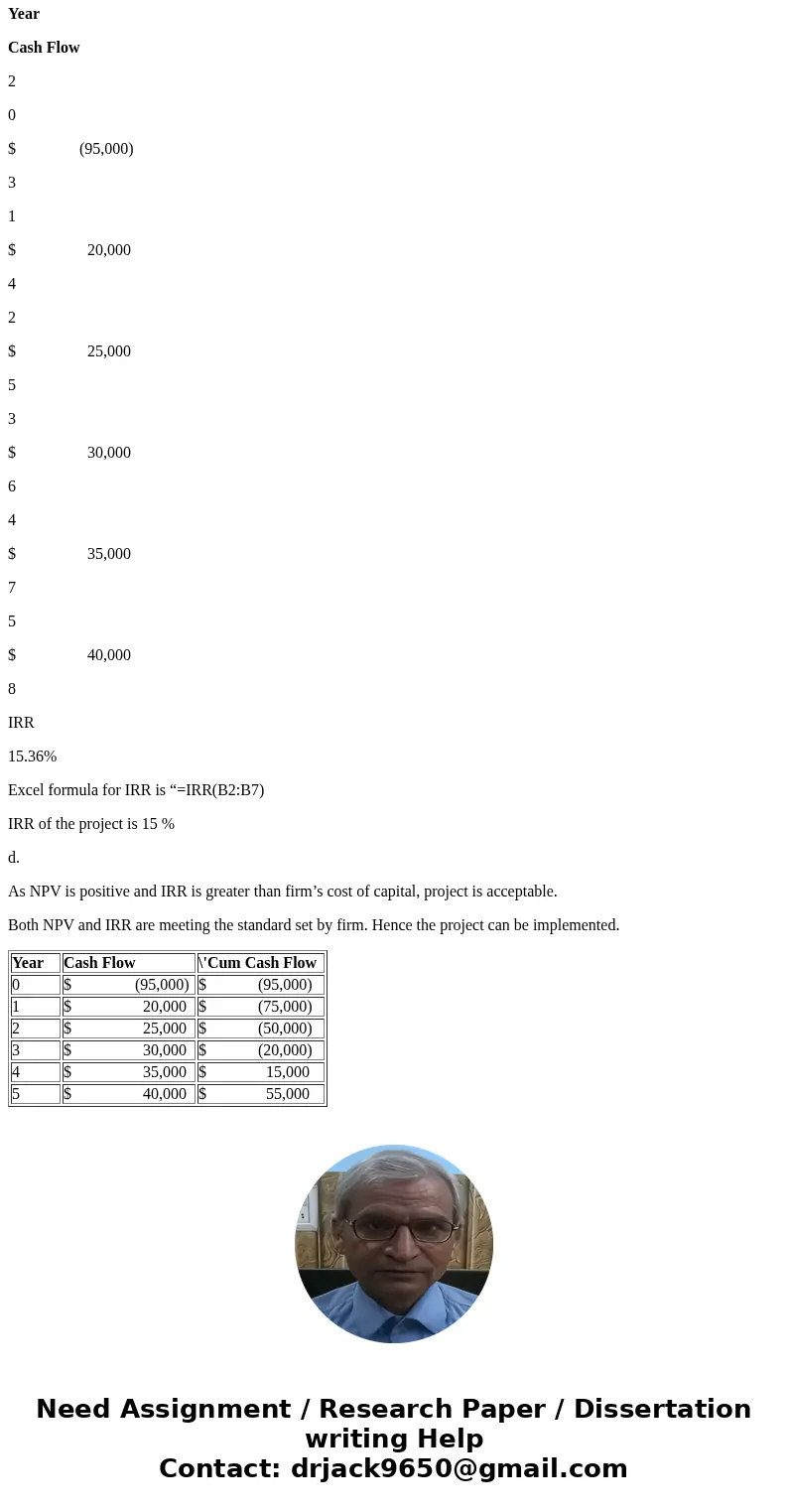Please show solution step by stepSolutiona Computation of Pa
Please show solution step by step
Solution
a.
Computation of Payback Period:
Year
Cash Flow
\'Cum Cash Flow
0
$ (95,000)
$ (95,000)
1
$ 20,000
$ (75,000)
2
$ 25,000
$ (50,000)
3
$ 30,000
$ (20,000)
4
$ 35,000
$ 15,000
5
$ 40,000
$ 55,000
Payback Period = A +B/C
Where,
A = Last period with a negative cumulative cash flow = 3
B = Absolute value of a cumulative cash flow at the end of the period A = $ 20,000
C = Total cash flow during the period after A = $ 35,000
Discounted Payback Period = 3 +?$ (20,000) ?/$ 35,000
= 30 + $ 20,000/$ 30,000
= 3 + 0.57143
= 3.57143 or 3.57 years
b.
Computation of NPV:
Year
Cash Flow(C)
PV Factor calculation
PV Factor (F)
PV (= C x F)
0
$ (95,000)
1/(1+12%)^0
1
($95,000.00)
1
$ 20,000
1/(1+12%)^1
0.892857143
$17,857.14
2
$ 25,000
1/(1+12%)^2
0.797193878
$19,929.85
3
$ 30,000
1/(1+12%)^3
0.711780248
$21,353.41
4
$ 35,000
1/(1+12%)^4
0.635518078
$22,243.13
5
$ 40,000
1/(1+12%)^5
0.567426856
$22,697.07
NPV
$9,080.60
c.
Computation of IRR:
A
B
1
Year
Cash Flow
2
0
$ (95,000)
3
1
$ 20,000
4
2
$ 25,000
5
3
$ 30,000
6
4
$ 35,000
7
5
$ 40,000
8
IRR
15.36%
Excel formula for IRR is “=IRR(B2:B7)
IRR of the project is 15 %
d.
As NPV is positive and IRR is greater than firm’s cost of capital, project is acceptable.
Both NPV and IRR are meeting the standard set by firm. Hence the project can be implemented.
| Year | Cash Flow | \'Cum Cash Flow |
| 0 | $ (95,000) | $ (95,000) |
| 1 | $ 20,000 | $ (75,000) |
| 2 | $ 25,000 | $ (50,000) |
| 3 | $ 30,000 | $ (20,000) |
| 4 | $ 35,000 | $ 15,000 |
| 5 | $ 40,000 | $ 55,000 |




 Homework Sourse
Homework Sourse